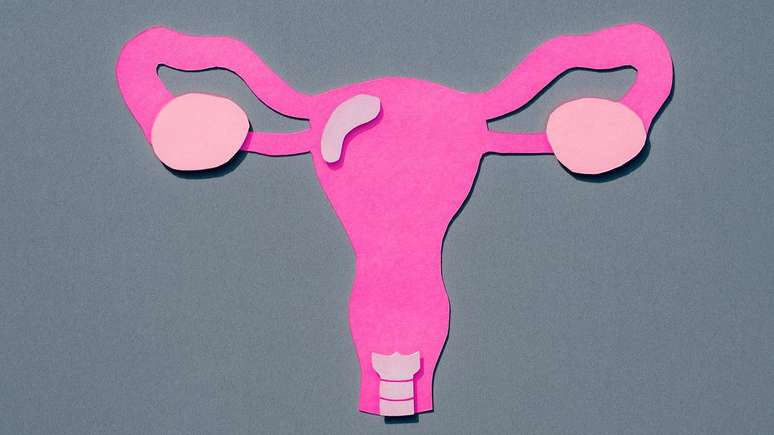COPD and heart failure can occur at the same time and make each other’s symptoms worse. Medical specialists provide guidance on controlling shortness of breath and reducing the risk of serious consequences, such as a heart attack.
Respiratory conditions are among the top ten causes of death worldwide. One of them ranks third: is chronic obstructive pulmonary disease, or COPD🇧🇷 It appears when pulmonary emphysema (a degenerative condition that develops after prolonged aggression to lung tissues) and chronic bronchitis coexist in the same lung, obstructing the airways and making breathing difficult. Unfortunately, COPD is especially dangerous if the patient has associated cardiovascular disease.

COPD and heart failure, for example, can occur at the same time, without necessarily being related. In this case, the difficulty breathing occurs simultaneously with the reduction in blood pumping that characterizes heart failure.
The problem is that one situation aggravates the other. As this heart problem intensifies the respiratory symptoms, “the COPD can worsen heart failure due to lung hyperinflation,” says pulmonologist Rosemeri Maurici, of the COPD Commission of Brazilian Society of Pulmonology and Physiology (SBPT)🇧🇷
Lung hyperinflation occurs when the patient has difficulty exhaling air from the body. “Air accumulates in the lungs, which causes an increase in lung volumes. This ends up compressing the heart and making cardiac function, already compromised by insufficiency, even more difficult”, explains the doctor.
COPD, in turn, causes a drop in the level of oxygen in the blood, which affects the proper functioning of the heart. This reduction in blood oxygenation is one of the factors that overloads the heart muscle and makes heart attacks more common in COPD patients.
And here’s a tidbit: The side of the heart that has heart failure is related to COPD. When the problem affects the right side of the heart muscle, it is often a result of the lung problem. But when it appears on the left or even globally, no.
“Heart failure does not lead to COPD, but COPD can lead to heart failure,” summarizes the pulmonologist.
How to distinguish between COPD and heart failure
Both heart failure and COPD make breathing difficult. For this reason, dyspnea (shortness of breath) is a common symptom. “Sometimes, it’s difficult to distinguish these images with just the history and physical exam,” Maurici acknowledges. “Further tests are needed, which evaluate both the respiratory and cardiovascular aspects,” he concludes.
Progressive shortness of breath, which initially appears only after great physical exertion, but which, over time, appears with even the slightest movement, is the most obvious sign of COPD. The picture is also accompanied by cough and expectoration and presents moments of exacerbation – or crisis – in which the symptoms worsen rapidly and require treatment.
Heart failure also leads to the shortness of breath that occurs in attacks, but it’s not necessarily progressive—it can start generating wheezing with minimal effort. The cardiovascular problem still causes swelling of the lower limbs, such as legs and feet.
The diagnosis of COPD is made by spirometry, a test of lung function. “The patient remains seated and performs some blowing maneuvers inside a device that measures lung capacity,” explains the doctor. The method also determines the severity of the situation.
Treatment
Individuals with COPD and heart failure are at increased risk of death, which demonstrates the importance of treatment. And COPD medications can often be used in those with cardiovascular disease as well.
“The two conditions must be treated simultaneously so that one does not worsen the other,” Maurici clarifies. “The sooner treatment, blood pressure control and smoking cessation are started, the less impact it has on the lungs and heart,” he adds.
In addition to drugs, there is non-pharmacological therapy, which includes vaccines to prevent infections and exacerbations of the disease, proper nutrition, smoking cessation, control of anxiety and depression levels and cardiopulmonary rehabilitation with physiotherapy. If there is a sharp drop in oxygenation, home oxygen therapy should be used.
Possible causes
Smoking is a common risk factor between heart failure and COPD. “Cigarettes impair the function of organs other than the lungs alone, and the heart is one of them,” confirms Maurici.
COPD is caused by continuous exposure to harmful particles in the environment, such as those deriving from tobacco combustion, biomass (wood stoves, for example) and pollution. Passive smoking is also among the causes and is already starting to play its role in childhood. “Chronic lung diseases have a higher incidence in children of smoking parents,” says the pulmonologist.
Heart failure can be triggered not only by smoking but also by untreated high blood pressure and high levels of triglycerides and cholesterol, among other reasons.
“Both COPD and heart failure are more common in the elderly, but can appear in younger adults,” Rosemeri explains.
About CDD
Chronicles of Day to Day (CDD) is a non-profit organization and believes that dialogue is the bridge so that no one has to live alone with a chronic illness. The goal of CDD’s work is to support all human potential to expand the life prospects of people with chronic disease conditions, through projects and content, so that people are neither defined nor reduced to their diagnoses. Since 2019, it has been developing the awareness campaign on Chronic Obstructive Pulmonary Disease (COPD), which sees the social investment of the pharmaceutical companies GSK and Boehringer Ingelheim in 2022.
Website: https://cdd.org.br/
🇧🇷The best content in your email for free. Choose your favorite Terra newsletter. Click here!
Source: Terra
Camila Luna is a writer at Gossipify, where she covers the latest movies and television series. With a passion for all things entertainment, Camila brings her unique perspective to her writing and offers readers an inside look at the industry. Camila is a graduate from the University of California, Los Angeles (UCLA) with a degree in English and is also a avid movie watcher.





